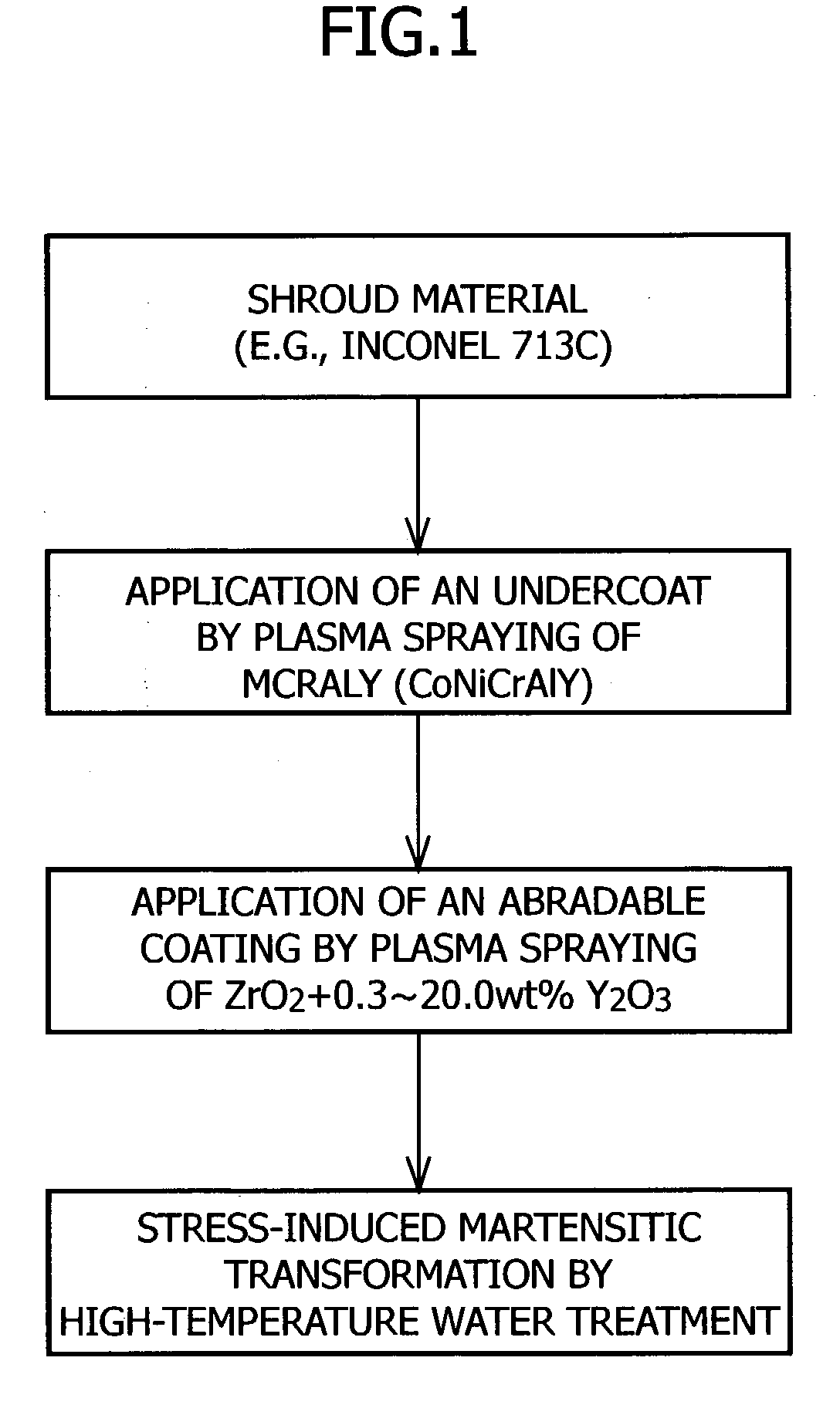Abradable coating and method for forming same
a technology of abradable coating and abradable material, which is applied in the direction of efficient propulsion technology, stators, machines/engines, etc., can solve the problems of insufficient monoclinic crystal structure of zirconia ceramic material, inability to achieve martensitic transformation easily, and use of high-temperature water treatment apparatus, etc., to achieve excellent cutting, improve gas turbine performance, and reduce the effect of tip clearan
- Summary
- Abstract
- Description
- Claims
- Application Information
AI Technical Summary
Benefits of technology
Problems solved by technology
Method used
Image
Examples
example 1
[0043] As illustrated in FIG. 1, Inconel 713C was used as the shroud material. First of all, in order to relax the differential thermal expansion between the shroud material and a zirconia ceramic layer as will be described later, an undercoat was applied to the shroud material by plasma-spraying CoNiCrAlY to a thickness of 100 to 250 .mu.m. This plasma spraying was carried out in air at an electric current of about 500 to 600 A. As the working gas, there was used a gaseous mixture composed of argon gas and hydrogen gas. The mixing ratio of argon gas and hydrogen gas was about 5:1, and the total flow rate thereof was in the range of 40 to 50 liters per minute. The distance between the plasma spraying torch and the shroud material was in the range of 100 to 150 mm, and the feed rate of powder was in the range of 30 to 40 g per minute. The plasma spraying was carried out by moving the spraying torch back and forth across Inconel 713C until it was coated with CoNiCrAlY to a thickness o...
example 2
[0049] As illustrated in FIG. 2, Inconel 713C was used as the shroud material. First of all, in order to relax the differential thermal expansion between the shroud material and a zirconia ceramic layer as will be described later, an undercoat was applied to the shroud material by plasma-spraying CoNiCrAlY in air to a thickness of 100 to 250 .mu.m. This plasma spraying was carried out by using an electric current of about 500 to 600 A and a working gas comprising a gaseous mixture composed of argon gas and hydrogen gas. The mixing ratio of argon gas and hydrogen gas was about 5:1, and the total flow rate thereof was in the range of 40 to 50 liters per minute. The distance between the plasma spraying torch and the shroud material was in the range of 100 to 150 mm, and the feed rate of powder was in the range of 30 to 40 g per minute. The plasma spraying was carried out by moving the spraying torch back and forth across the shroud material until it was coated to a thickness of 100 to ...
PUM
| Property | Measurement | Unit |
|---|---|---|
| temperature | aaaaa | aaaaa |
| temperatures | aaaaa | aaaaa |
| temperature | aaaaa | aaaaa |
Abstract
Description
Claims
Application Information
 Login to View More
Login to View More - R&D
- Intellectual Property
- Life Sciences
- Materials
- Tech Scout
- Unparalleled Data Quality
- Higher Quality Content
- 60% Fewer Hallucinations
Browse by: Latest US Patents, China's latest patents, Technical Efficacy Thesaurus, Application Domain, Technology Topic, Popular Technical Reports.
© 2025 PatSnap. All rights reserved.Legal|Privacy policy|Modern Slavery Act Transparency Statement|Sitemap|About US| Contact US: help@patsnap.com



